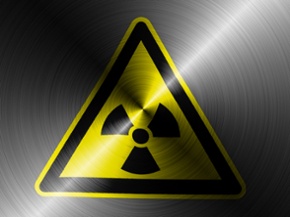 Electronic waste falls into a special category of materials called “universal waste,” as classified by the federal Environmental Protection Agency (EPA). This category is for material that would normally be considered hazardous waste, but currently exists in a state that reasonably contains the hazardous substances within. However, once disposed, universal waste can be considered hazardous waste, especially if the final disposition of the waste is in a landfill. When a lot of electronic devices sit in a landfill for an extended period of time, they begin to transmit their dangerous chemicals into the surrounding ground and water resources, eventually polluting nearby households and cause widespread health problems.
Electronic waste falls into a special category of materials called “universal waste,” as classified by the federal Environmental Protection Agency (EPA). This category is for material that would normally be considered hazardous waste, but currently exists in a state that reasonably contains the hazardous substances within. However, once disposed, universal waste can be considered hazardous waste, especially if the final disposition of the waste is in a landfill. When a lot of electronic devices sit in a landfill for an extended period of time, they begin to transmit their dangerous chemicals into the surrounding ground and water resources, eventually polluting nearby households and cause widespread health problems.
There are a number of chemicals in electronic waste that are dangerous for humans and the environment:
Lead
Lead exists in significant quantities in cathode ray tubes (CRTs) – which means older monitors and TV’s. Lead is carcinogenic (cancer-causing) and damages kidneys. There is also a large cocktail of various chemicals and compounds found within typical consumer electronics.
Mercury
A significant concern in newer technology is mercury, which can be found in batteries and LCD screens. Mercury bio-accumulates in the body, which means it is never flushed out once it enters. Mercury will keep building up in the body over the course of a life time and may eventually cause brain and liver damage.
Dioxins
Another area of concern is a family of chemicals called dioxins. These are so toxic that manufacturers do not deliberately add them to electronics – but they are often formed when the electronic components are burned and melted. Ingesting dioxins results in impaired immune system function, impaired growth, hampered development, and major birth defects.
This is why it is so important that electronic waste not be sent overseas where communities burn e-waste or use acid baths to try to remove precious metals. The people, and their environment, are exposed directly to these chemicals.
Brominated flame retardants, often used in circuit boards, turn into dioxins when burnt, which is a primary reason why circuit board manufacturers are trying to substitute their use with something safer. One issue is that the brominated flame retardants have a tendency to evaporate out of the plastic of the boards and accumulate in indoor dust.
Other chemicals
Those are just a handful of nasty substances found in many common electronics. Other troubling chemicals that are also found include cadmium, beryllium, arsenic, PCBs, and selenium.
It is important to keep these hazardous substances properly contained and managed so they do not pose any threat to communities and the workers involved in the disposition of the electronics. Also, most of these substances can be reused if processed properly. Certifications in the electronics recycling industry such as e-Stewards and R2/RIOS have numerous requirements for health and safety controls in the workplace, along with monitoring and maintaining employee health. If managed properly, e-waste can be safely broken down and the hazardous components separated and sent to be re-processed. When electronics are simply thrown in a landfill, the chemical cocktail inside begins the slow process of escaping into the ground and water of the surrounding communities.
If you’re concerned your business is releasing toxic chemicals into the environment through its disposal of IT equipment, download “The 2013 Guide to Environmental Compliance in IT Asset Disposition” to learn how to plan for a more environmentally responsible disposal process.
This post is contributed by Thomas Horner, Environmental Coordinator at Lifespan.

